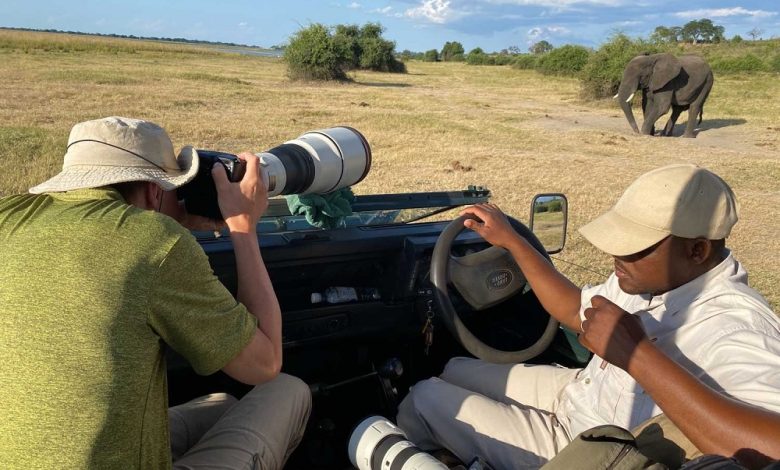Mastering the Art of Wildlife Photography: Essential Tips for Patience and Preparation

Capturing the beauty of wildlife through the lens is a pursuit that demands more than just technical skill with a camera. It requires a blend of patience, preparation, and a profound understanding of the natural world. Whether you’re a budding photographer or a seasoned pro looking to refine your craft, the following tips will help you approach wildlife photography with the mindfulness and dedication it deserves.
The art of Family Photography lies in capturing the bond and love shared by family members in every photo. It’s about creating timeless images that speak to your family’s unique story.
1. Understanding Animal Behavior
Before setting out on a wildlife photography expedition, it’s crucial to invest time in learning about the species you intend to photograph. Each animal has its own set of behaviors, routines, and habitats. Understanding these can significantly enhance your chances of capturing compelling images. For instance, if you’re aiming to photograph a specific bird, researching its feeding habits, nesting sites, and migration patterns will guide you to the right locations and times.
2. Choosing the Right Equipment
While high-end equipment can certainly aid in capturing high-quality images, it’s not the only factor to consider. A telephoto lens is often essential for wildlife photography, allowing you to shoot from a distance without disturbing the animals. Additionally, having a sturdy tripod is important for stabilizing your camera, especially when using long lenses. Don’t forget to bring extra batteries and memory cards; wildlife photography often involves long waits and unpredictable moments.
3. Mastering the Art of Camouflage
Blending into your environment is key to not startling the wildlife you’re photographing. Wearing neutral colors and natural fabrics can help you stay inconspicuous. Additionally, using camouflage gear or blinds can significantly improve your chances of capturing natural behavior. This approach minimizes disturbance and allows animals to act more naturally, resulting in more authentic and compelling photographs.
4. Patience: A Photographer’s Virtue
Patience is perhaps the most critical element in wildlife photography. Animals do not adhere to a photographer’s schedule, and waiting for the perfect moment can sometimes require hours of stillness. Embrace the unpredictability of the natural world and be prepared to wait for long periods. Sometimes, the most stunning photographs come from moments of quiet observation and subtlety.
5. Timing and Lighting
The time of day can greatly influence the quality of your wildlife photographs. Early mornings and late afternoons provide the soft, golden light that can enhance the textures and colors in your images. Additionally, the position of the sun can affect how light interacts with your subject. Avoid photographing animals in harsh midday light, which can create unflattering shadows and overexposure.
6. Respecting Wildlife and Their Habitat
Maintaining a respectful distance from wildlife is crucial. Your presence should not interfere with their natural behaviors or cause them stress. Use a telephoto lens to capture close-up shots without getting too close. Respecting wildlife and their habitats ensures not only their well-being but also a more ethical approach to your photography.
7. Focusing on Composition
A well-composed photograph can make a significant difference in the impact of your image. Pay attention to the rule of thirds, which involves dividing your frame into nine equal parts and positioning your subject along these lines or their intersections. This technique can help create a balanced and engaging composition. Additionally, leading lines and natural frames, such as branches or foliage, can guide the viewer’s eye towards your subject.
8. Capturing Movement and Emotion
Wildlife photography is not just about static images; capturing movement and emotion can add a dynamic element to your photos. Use a fast shutter speed to freeze action, or a slower shutter speed to convey motion. Pay attention to the expressions and interactions of animals to capture moments of emotional depth. These elements can transform a simple photograph into a powerful story.
9. Post-Processing with Care
Post-processing can enhance your wildlife photographs, but it should be done with a light touch. Adjustments to exposure, contrast, and sharpness can help bring out the best in your images, but be cautious not to over-edit. The goal is to present the wildlife in a way that remains true to its natural beauty while highlighting the details that make your photograph stand out.
10. Building a Portfolio and Sharing Your Work
Once you’ve accumulated a collection of wildlife photographs, consider creating a portfolio to showcase your work. Sharing your images on social media, photography forums, or in exhibitions can provide valuable feedback and help you connect with other enthusiasts. Building a portfolio also allows you to track your progress and refine your skills over time.
Wildlife photography is a blend of art and science, requiring a thoughtful approach and an appreciation for the natural world. By investing time in preparation and practicing patience, you can capture images that not only showcase the beauty of wildlife but also tell compelling stories of the natural world. As you hone your skills, remember that each moment in the wild is unique, and every photograph has the potential to reveal something new and wondrous.




